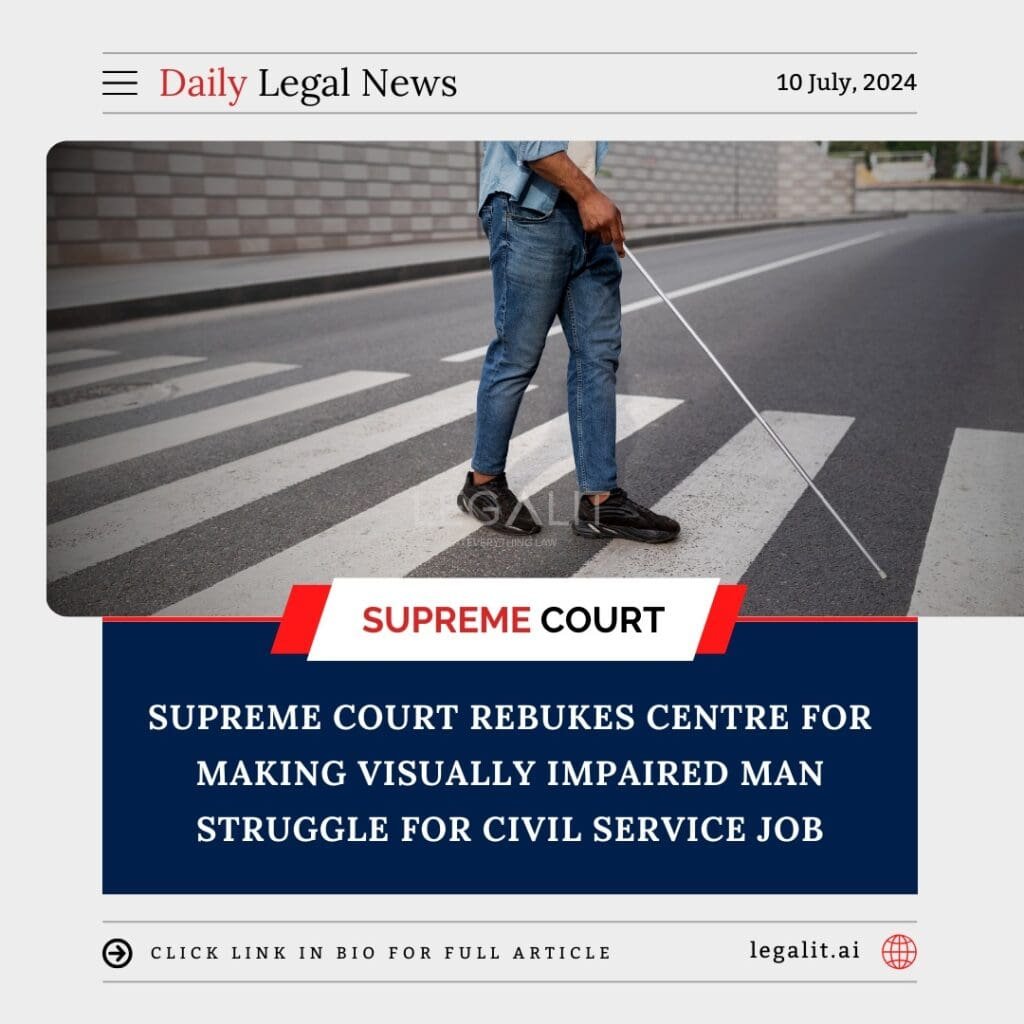
In a significant rebuke, the Supreme Court of India has criticized the central government for making a visually impaired candidate face numerous obstacles in his quest for a civil service job. The Court’s stern remarks underscore the challenges faced by differently-abled individuals in accessing equal opportunities and the need for a more inclusive approach in government recruitment processes.
Background of the Case
The case involves a visually impaired man who qualified for a civil service position but faced bureaucratic hurdles and discrimination that prevented him from securing the job. Despite meeting the necessary qualifications and clearing the required examinations, the candidate was subjected to a series of administrative delays and rejections, forcing him to seek legal redress.
Supreme Court’s Remarks
During the hearing, the Supreme Court expressed its displeasure over the treatment meted out to the candidate. The key points of the Court’s observations include:
- Bureaucratic Hurdles: The Court highlighted the unnecessary bureaucratic procedures that the candidate was forced to navigate, which amounted to systemic discrimination against a person with a disability.
- Failure to Ensure Inclusion: The Justices criticized the government’s failure to implement adequate measures to ensure that individuals with disabilities are given fair and equal access to employment opportunities, particularly in the civil services.
- Directive for Immediate Action: The Supreme Court directed the relevant authorities to expedite the candidate’s appointment process, ensuring that he is not subjected to further delays or discrimination.
Implications of the Ruling
The Supreme Court’s rebuke has several significant implications:
- Policy Review: This case may prompt the central government to review and streamline its recruitment policies to make them more inclusive and accessible for candidates with disabilities.
- Awareness and Sensitivity: The ruling serves as a reminder of the importance of sensitivity and awareness in handling cases involving differently-abled individuals, ensuring they receive the support and opportunities they deserve.
- Legal Precedents: The Court’s remarks may set a precedent for similar cases, reinforcing the judiciary’s role in protecting the rights of differently-abled individuals and ensuring equal opportunities in employment.
Public and Legal Reactions
The Supreme Court’s criticism has been widely covered in the media, eliciting varied reactions:
- Support from Advocacy Groups: Disability rights activists and advocacy groups have welcomed the Court’s remarks, viewing them as a step towards greater inclusion and fairness in government recruitment processes.
- Government Response: The central government is expected to respond by taking corrective measures to address the issues highlighted by the Court, potentially leading to policy changes and improved procedures for handling such cases in the future.
Conclusion
The Supreme Court’s strong criticism of the central government’s handling of a visually impaired candidate’s civil service job application underscores the need for greater inclusivity and sensitivity in public sector recruitment. This ruling not only seeks to rectify the injustice faced by the individual in question but also aims to set a broader precedent for protecting the rights of differently-abled individuals in India. As the government takes steps to address these issues, it is hoped that this case will lead to more equitable and accessible employment opportunities for all.